
Leucothoe: planting, growing, pruning and care
Contents
Leucothoe in a nutshell
- Leucothoe is an acidophilous bush with remarkable foliage, evergreen and changing throughout the seasons, beautiful all year round!
- It thrives in acidic soils rich in humus.
- Its discreet spring flowering, with white or pink delicately scented blooms, brings great freshness to the garden.
- It prefers partial shade or shade.
- Original and graphic, it can be used in borders, as a specimen plant, in free hedges, or in large pots on the terrace.
A word from our expert
The Leucothoe is an unjustly overlooked bush with remarkable, evergreen foliage that changes throughout the seasons, much like Leucothoe fontanesiana ‘Rainbow’, Leucothoe ‘Scarletta’, or Leucothoe axillaris (or Leucothoë walteri) and its cultivar ‘Curly Red’, evolving from purplish-red in spring, through bronze-green in summer, to fiery red in autumn.
This heather soil shrub is, however, a must-have for shady gardens, where it brings, with its always beautiful colourful foliage and delicate white or pink flowers exuding a light fragrance in spring, a true presence all year round.
With its great hardiness and resistance to diseases, Leucothoe is accommodating in light, acidic soil, free from lime, cool but well-drained, where it thrives protected from cold winds and stagnant moisture.
Its relatively slow growth and modest size make it well-suited for small gardens or city gardens. However, it adapts to all styles of gardens, from the most contemporary to the most classic, including Japanese-inspired compositions.
In a free hedge or grouped at the edge of a shrub bed, in a cool rockery, or in a pot, it will subtly dress semi-shaded or shaded corners in any season, donning a green or purple robe.
With its glossy evergreen foliage, the Leucothoe is among the most beautiful heather soil shrubs. Discover this little-known bush that deserves its place in the garden and let yourself be charmed!
Description and Botany
Botanical data
- Latin name Leucothoe
- Family Ericaceae
- Common name Leucothoe
- Flowering from May to June
- Height 0.60 to 5 m
- Exposure shade, partial shade
- Soil type Acidic, well-drained
- Hardiness -20°C
Le Leucothoe, commonly known as “Pearl Flower”, is a small bush from the Ericaceae family, like heathers and rhododendrons, with which it shares a strong preference for acidic heather soils. It is found in wooded areas and humid undergrowth in the eastern United States, Japan, and the Himalayas.
There are about fifty species, both evergreen and deciduous. Only a small number of evergreen species and varieties, mainly with red or purple foliage, are cultivated in our latitudes.
The most common are Leucothoe fontanesiana (or Desfontaines’ Leucothoe), which comes in many varieties (‘Scarletta’), and Leucothoe axillaris (or Leucothoë walteri) and its cultivar ‘Curly Red’. Less commonly, Leucothoe keiskei, Leucothoe davisiae, and Leucothoe racemosa are offered in our climates.
Leucothoe has a dense, upright or bushy-spreading and compact habit. Wider than tall, it will reach up to 2 m in height with a spread of 2 to 3 m at maturity. Some Leucothoe have arching branches.
Its growth is quite slow, taking several years to sufficiently develop and express its full potential. This slowness is matched only by its beautiful longevity. Some species are suckering (racemosa) and can serve as ground cover.
Its graphic and contrasting foliage, which changes colour with the seasons, is its main asset. It is evergreen or semi-evergreen in milder winters and remains attractive all year round, even outside of flowering. It provides a permanent and admirably changing backdrop of greenery.
On reddish, shiny stems, the leathery leaves, alternate, oblong to ovate, narrow, measuring 4 to 15 cm long, unfold. They end in a point and are often lustrous, shiny, and glazed. Leucothoe axillaris has a twisted foliage with smaller, beautifully twisted, recurved, and crinkled leaves.

The foliage of Leucothoe is very decorative: Leucothoe axillaris ‘Curly Red’, Leucothoe fontanesiana ‘Makijaz’, Leucothoe keiskei ‘Burning Love’, Leucothoe fontanesiana ‘Whitewater’, Leucothoe ‘Twisting Red’.
With each seasonal change, from autumn to summer, their colours evolve, shifting from green to purple and bronze, depending on the variety. In early spring, the young shoots may be a tender green, dark green, or even pink or reddish-purple, sometimes violet at bud burst, then dark glossy green afterwards. The entire shrub turns purple again in autumn.
Some varieties (Leucothoe fontanesiana ‘Whitewater’) offer a variegated foliage of dark green, edged with cream white or beautifully splashed and speckled with white (‘Makijaz’).
This shrub is also called “pearl flower” for its discreet and delicate flowering from early spring. From April to May, or even June, small white, cream, or pink bell-shaped flowers are borne in thin pendulous clusters or panicles at the tips of the branches or along the stems. The flowers measure 0.5 to 1 cm long, and the clusters range from 2 to 15 cm long. Slightly fragrant, they remind one of the fresh flowering of its cousins, the Japanese andromedas (or Pieris).
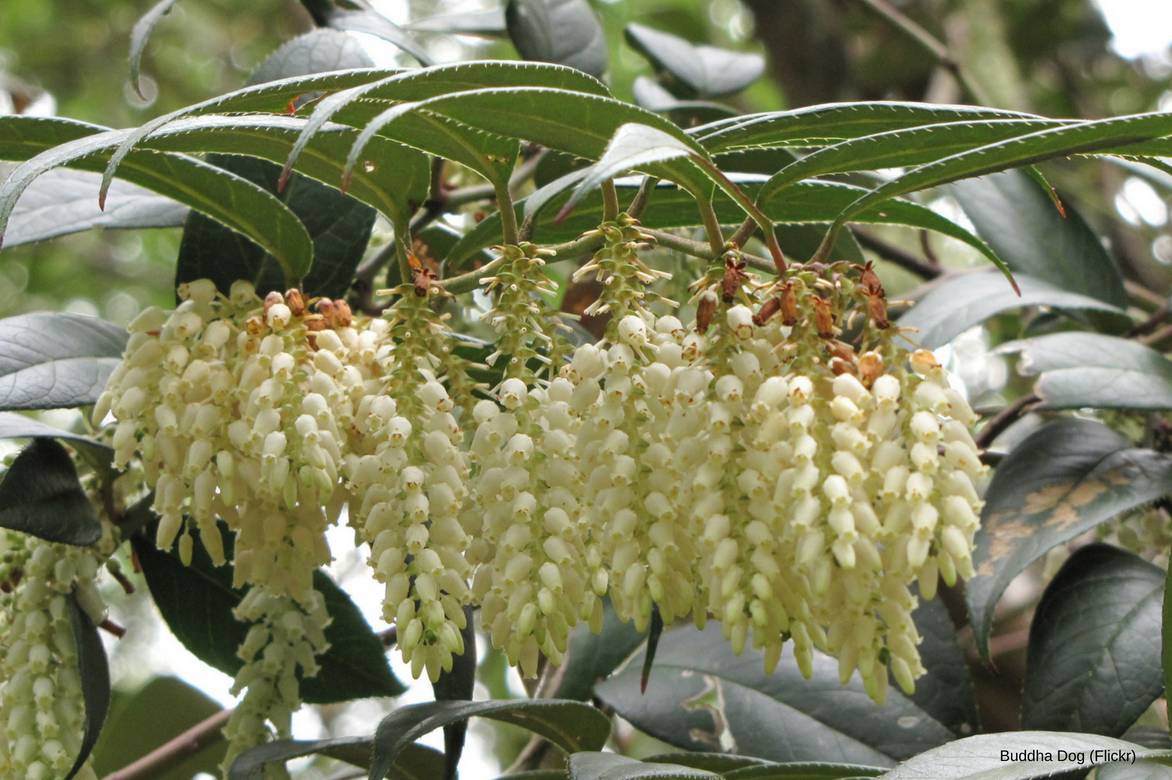
Flowers of Leucothoe fontanesiana.
This hardy shrub (down to -20°C) grows in most regions. It is essential in slightly shaded gardens, as it does not really like the sun.
It prefers well-drained, acidic soils (heather soil), cool, rich in humus, and shows a strong preference for the partial shade of cool undergrowth.
With its beautiful graphic vegetation and its evolving decorative presence throughout the year, the Leucothoe finds its place in all styles of gardens, whether classic, Japanese-inspired, or even contemporary, where it works wonders in front of shrub borders with other ericaceous plants, at the edge, in rockeries, as ‘trunk covers’, and even as a replacement for topiary. Its moderate growth and compact habit also allow it to be grown in pots on terraces and balconies with little sunlight.
Main species and varieties
Among some 50 species of Leucothoe, less than a dozen of species and varieties are grown in our gardens.
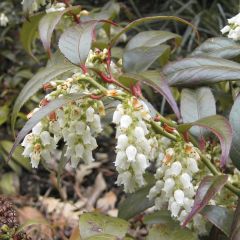
Leucothoe fontanesiana Scarletta
- Flowering time June, July
- Height at maturity 1,20 m

Leucothoe fontanesiana Rainbow
- Flowering time May to July
- Height at maturity 1 m

Leucothoe axillaris Curly Red
- Flowering time May, June
- Height at maturity 50 cm
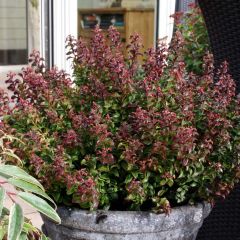
Leucothoe axillaris Twisting Red - Dog hobble
- Flowering time May, June
- Height at maturity 40 cm

Leucothoe keiskei Burning Love
- Flowering time May, June
- Height at maturity 80 cm
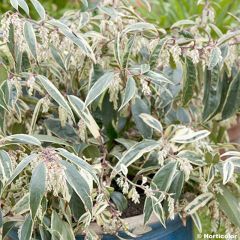
Leucothoe fontanesiana Whitewater
- Flowering time May, June
- Height at maturity 1,20 m

Leucothoe fontanesiana Makijaz
- Flowering time May, June
- Height at maturity 40 cm
Discover other Leucothoe
View all →Available in 1 sizes
Available in 3 sizes
Available in 2 sizes
Available in 2 sizes
Available in 1 sizes
Available in 1 sizes
Available in 1 sizes
Available in 1 sizes
Available in 1 sizes
Available in 1 sizes
Planting Leucothoe
Where to plant?
Perfectly hardy, Leucothoe grows everywhere in France, tolerating temperatures down to -20 °C, sometimes even lower, provided it is planted out of cold drafts and strong winds. Its young shoots are sensitive to frost and spring thaws that can scorch its beautiful coloured foliage.
This easy-to-grow bush does have some requirements to consider when establishing it in the garden: it absolutely needs shade and acidity to thrive. Like all ericaceous plants, it does not tolerate calcareous soils, nor heavy, compact, suffocating soils that are waterlogged in winter.
It thrives in shaded corners, sheltered from strong winds, along a wall facing East or North, or under the dappled shade of large trees. Avoid overly dense shade; it needs light to maintain its beautiful, well-coloured leaves.
In terms of soil, Leucothoe does not appreciate excess: it dislikes both heavy soils and overly dry soils in summer.
For optimal growth, it requires an acidic, light, and humus-bearing soil, completely devoid of lime, similar to heather soil, and well-drained.
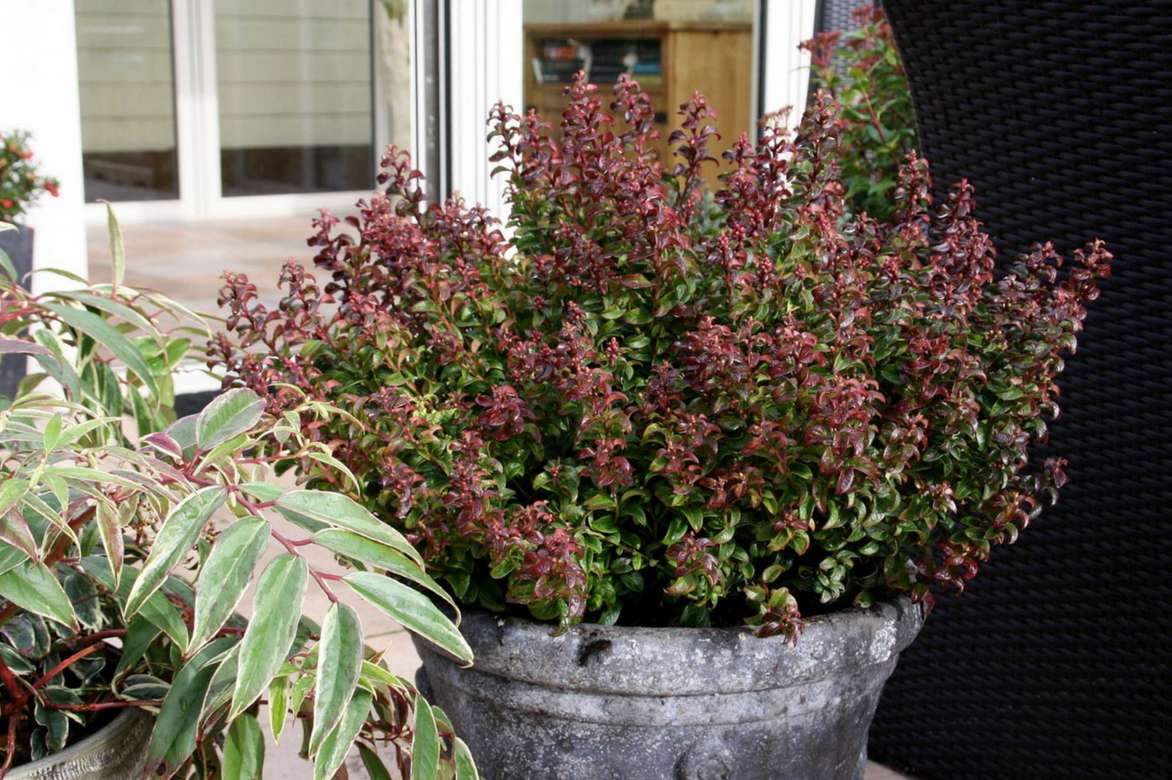
Leucothoe ‘Twisting Red’ in a pot on a terrace.
It enjoys cool soils where water never stagnates. It is very sensitive to excess water, so avoid flooded areas, especially in winter. In summer, consider using ground covers like heathers: it likes its roots to be kept cool during the summer.
With very slow growth, this compact bush is well-suited to small gardens or city gardens.
It can be used in borders with perennials (hellebore or ferns), at the edge of woodlands, to dress a wall, in a free-standing hedge, alongside other ericaceous plants (Pieris, nandinas, symphorines, Kalmias, Azaleas, Hydrangeas, Japanese Maples) that will take over flowering during summer and autumn, or as a solitary plant or in a pot on a shaded terrace or balcony.
With its evergreen foliage benefiting from mild winters, it makes a perfect ‘trunk cover’ at the base of trees or shrubs that become bare in winter.
Plant the taller varieties (‘Scarletta’) in a sheltered wooded area, to fill a hedge, while the smaller Leucothoe (‘Twisting Red’) can be used in a cool rockery or at the edge of a flowerbed exposed to partial shade.
When to plant?
Plant leucothoe in spring in April-May after the frosts, in already warmed soil, or in autumn from September to November in the warmest regions, avoiding dry spells.
How to plant?
In the Ground
If your soil is too calcareous, heavy, or neutral, improve it with an addition of heather soil, leaf compost, and peat, not forgetting to supplement with a good base fertiliser (crushed horn, dried blood…). Avoid areas where water stagnates. If you do not have the right soil to grow it, it is better to simply give up on trying to counteract the elitist nature of Leucothoe by opting for container cultivation instead!
- Dig a hole three times wider than the pot
- Add gravel or pumice or a good layer of clay pebbles at the bottom of the planting hole to ensure drainage
- Plant the bush at collar level, in a mixture composed of 1/5 of loamy soil mixed in equal parts with peat, heather soil, and leaf compost
- Spread an organic mulch of pine bark or plant small perennials to protect the base and reduce watering
- Water regularly with non-calcareous water (rainwater), 2 to 3 times a week for the first 15 days after planting to keep the soil moist and cool and facilitate recovery
In a pot
Some compact and small-growing varieties of Leucothoe (‘Twisting Red’, ‘Makijaz’) are perfectly suited for this type of use on terraces and balconies.
- Choose a large container with a minimum diameter of 50 cm
- Spread a layer of gravel or clay pebbles at the bottom of the pot
- Plant the leucothoe in a fresh, very draining mixture based on true heather soil, compost, and leaf compost
- Spread a mulch where you can plant small perennials to maintain freshness, especially during the first two years
- Place it well in the shade and sheltered from strong winds
- In pots, they will not tolerate even temporary drought: water very regularly with rainwater (non-calcareous) exclusively.
→ Learn more in our advice sheet: growing a Leucothoe in a pot
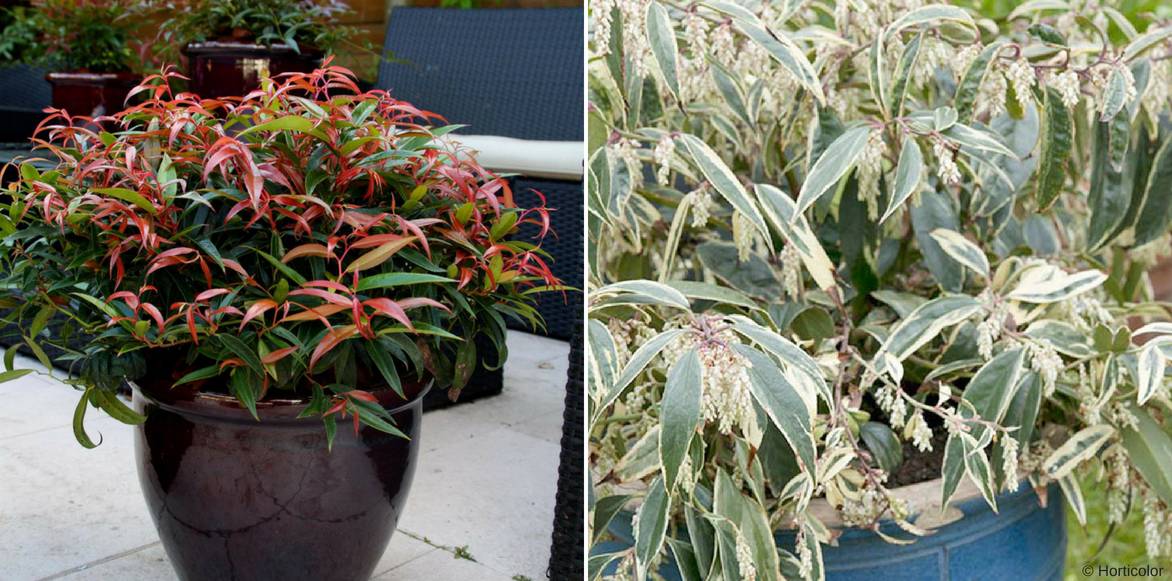
Leucothoe is well-suited for pot cultivation: Leucothoe keiskei ‘Burning Love’, Leucothoe fontanesiana ‘Whitewater’.
Pruning and care
Once well established, the Leucothoe requires little to no maintenance. Its cultivation is easy as long as it has enough water and shade.
However, it absolutely cannot tolerate dehydration. For the first two years, water regularly with rainwater. In summer, water 2 to 3 times a month and keep its roots cool during the summer by applying a mulch (bark or pine needles, leaf litter) around its base.
Once well established, water only when it is hot and dry.
Subsequently, the development of the foliage will replace this mulch, providing the bush with welcome shade.
Every year in autumn or spring, add a layer of heather soil by lightly scratching it around the base of the shrub.
Carefully monitor watering for potted plants, keeping the substrate always slightly moist: the soil tends to dry out more quickly. Mulch every spring.
When and how to prune a Leucothoe?
Pruning is not strictly necessary. The Leucothoe only requires light maintenance pruning each year. It is more about refreshing in spring to maintain a balanced habit.
- Only intervene to remove any dead or diseased branches and those compromising the symmetry of the shrub: do not prune too early in winter, as the stems may freeze; do this between February and April, before the growth resumes.
- Old, neglected, or overly bare shrubs can be severely cut back: at the end of winter, in March, cut back the bare stems by one-third. This rejuvenating pruning, carried out every 4 to 5 years, is useful for achieving a lovely bushy shape, encouraging new shoots, and enhancing the foliage’s colour.
Diseases and potential pests
Grown in good conditions (in well-drained acidic soil), Leucothoe is insensitive to diseases and pests. The troubles that threaten it generally stem from poorly drained soil or stagnant moisture around the roots.
Propagating Leucothoe
Propagation by cuttings of Leucothoe is the easiest method to obtain the maximum number of new plants.
When and how to propagate a Leucothoe?
- By semi-ripe cuttings
- After flowering between July and September, take semi-woody or semi-ripe shoots (which transform from softwood to hardwood) 20 to 25 cm long by cutting 1 cm below a bud
- Plant these cuttings in a bucket two-thirds of their length in a light, well-draining substrate
- Regularly mist the cuttings with a spray bottle
- Overwinter them in a frost-free environment
- Transplant into the ground the following spring when the soil is well warmed
Associating
Graphically, Leucothoe, this cousin of heathers and rhododendrons, is very easy to combine in softly lit settings of cool undergrowth. With its wildly changing appearance, it fits into any style of garden, from a revisited French-style garden (it can serve as an original topiary to replace boxwood!) to a zen garden, Japanese-inspired or contemporary, and makes a lovely decorative subject all year round, even in the bleak season.
This original and graphic bush is ideal in shrub borders, in free hedges, or even in pots on a non-scorching terrace.
Its dense, glossy, and evergreen silhouette beautifully complements other acidophilous plants such as symphorines, Pieris, ferns, Kalmias, Azaleas, Hydrangeas, Japanese Maples, and Camellias, which will continue the flowering display.
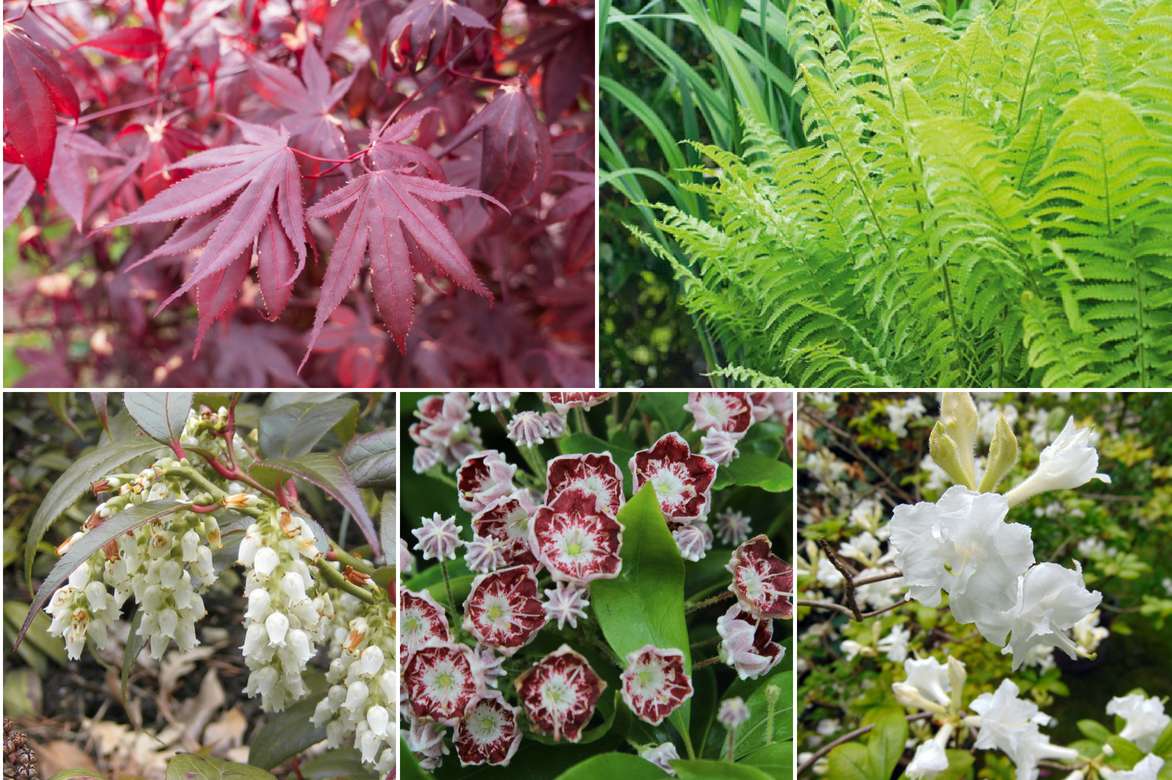
An idea for undergrowth association: Acer palmatum ‘Bloodgood’, Matteuccia struthiopteris, Leucothoe fontanesiana ‘Scarletta’, Kalmia latifolia ‘Tad’, Azalea mollis ‘White Frills’.
It forms a beautiful duo with Nandinas, with which it shares a very ornamental foliage that evolves throughout the seasons.
In a perennial border, it will be accompanied by hellebore, ferns, and winter heathers.
→ Discover more association ideas with Leucothoe
Useful resources
-
- Attention to heather soil shrub collectors: discover our Leucothoe collection, including some rare and exclusive varieties!
- Don’t miss their planting! Follow Michaël’s tips to succeed in growing heather soil bushes
- Want to know how to choose a Leucothoe? Check out our advice sheet!
- Subscribe!
- Contents
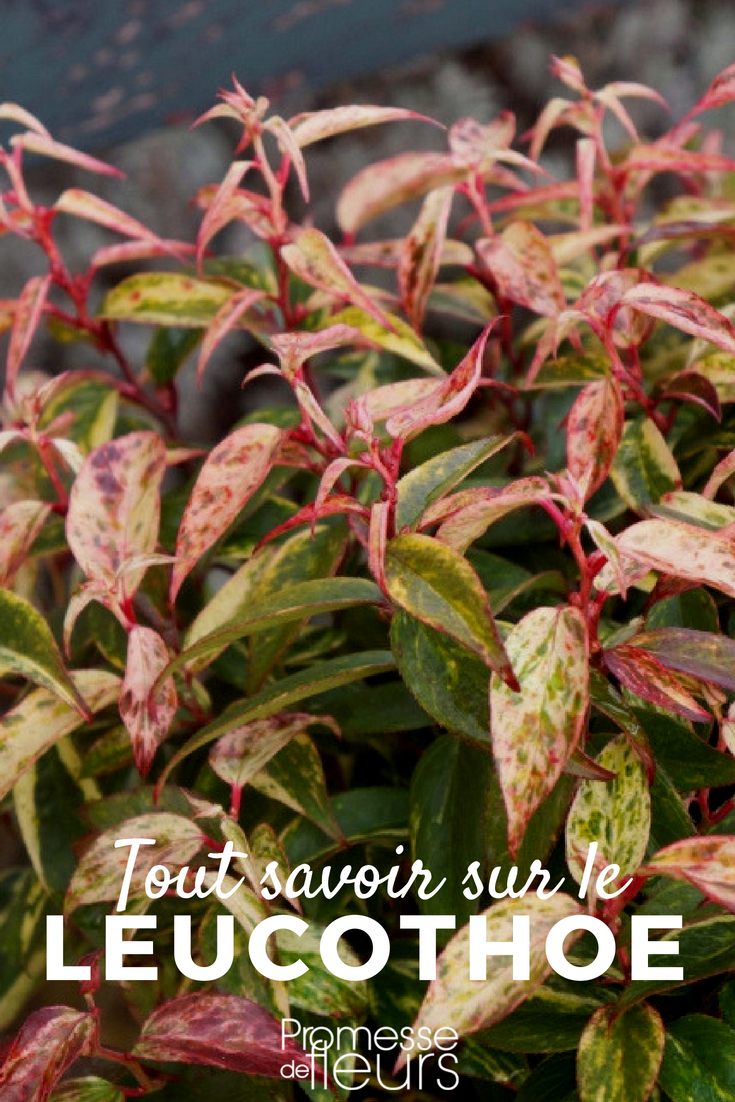









































Comments